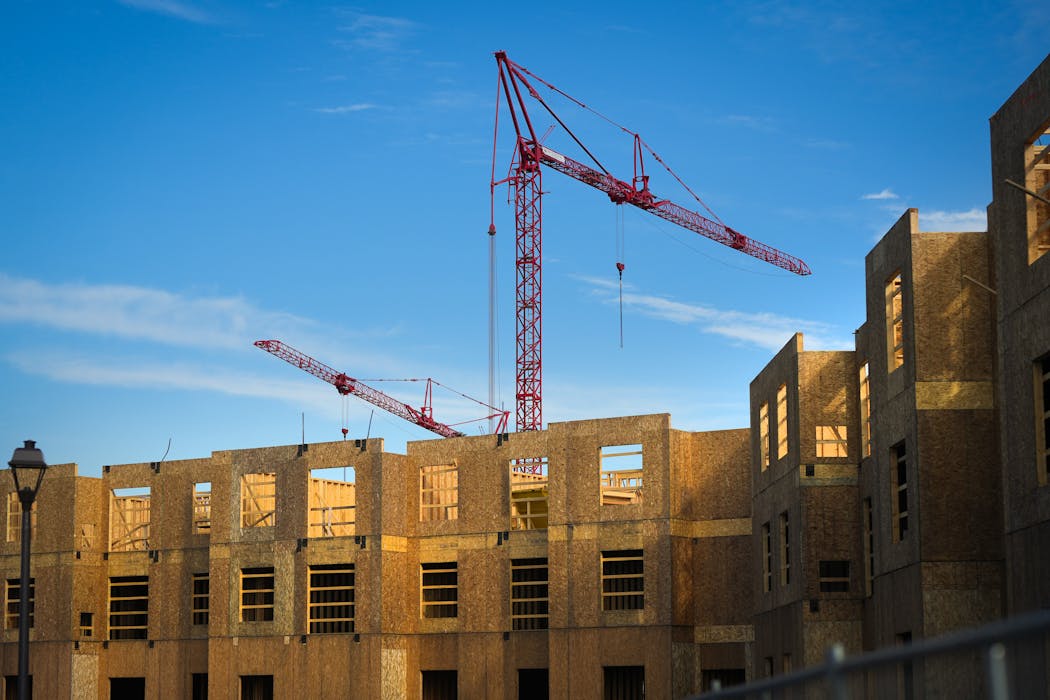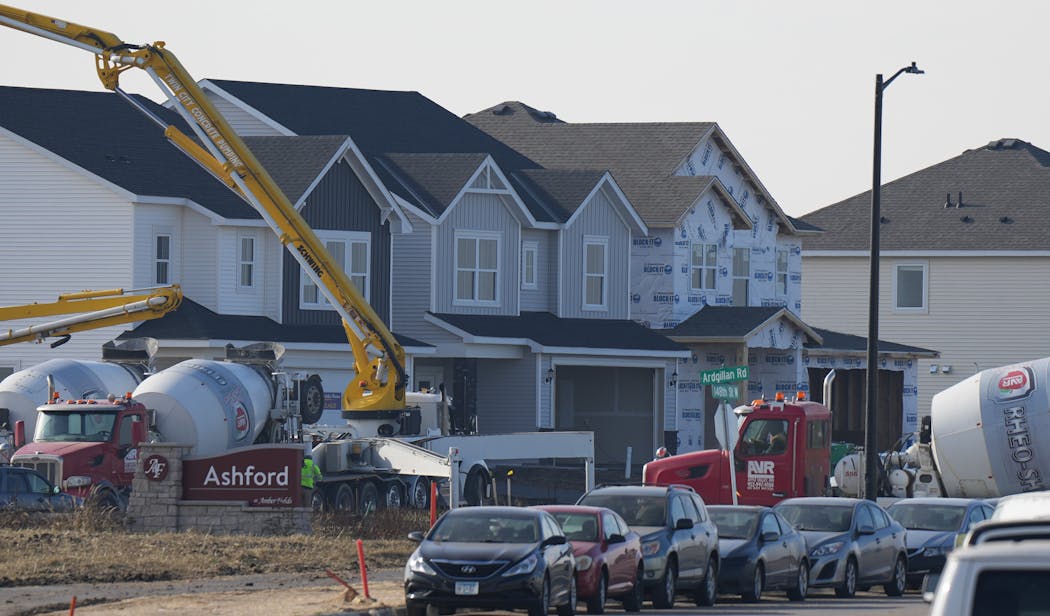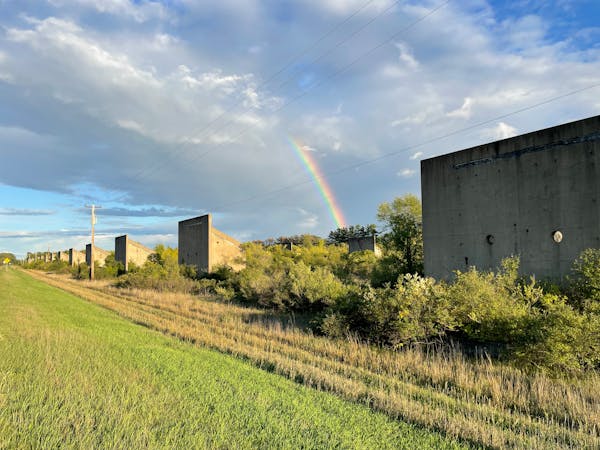Since the 1980s, farmer Daryl Buecksler has rented hundreds of acres of farmland, including about 22 acres on the northeast side of Rosemount.
But now, as with other Rosemount parcels he's farmed, that arrangement will end. What were fields of soybeans are slated to become the site of a new elementary school serving the Rosemount-Apple Valley-Eagan district.
"It's being taken out of production," Buecksler said. "But because of the growth of the community, that's been expected."
The south metro suburb of Rosemount is booming, with hundreds of houses, three new apartment buildings and two new schools sprouting up or in the works on what has long been fertile farmland. Commercial growth is flourishing, too, with a new Life Time gym, several massive distribution centers and a $58 million police station and public works facility going up.
"It's exploding," said Christopher Mosier , a south metro-based real estate agent and broker with Mosier Realty Group. "It's really becoming a destination spot."
So far this year, the city ranks fourth statewide in total number of housing permits and second in terms of total units, according to Housing First Minnesota, a trade association representing homebuilders.
And in November, Rosemount expects to review final plans for a $700 million Meta data center, said City Administrator Logan Martin. It would sit on 280 acres in the University of Minnesota's UMore Park — a 5,000-acre parcel along County Road 42 that once housed a World War II munitions factory.
Martin said although there has been four years of "pedal to the metal" growth, the city is poised for more with more than 1,000 acres undeveloped on Rosemount's east side and an "interested and driven City Council that wants to go for development."
City officials have another, more ambiguous goal for the city of 27,000 as it expands: maintaining a strong, small-town-style sense of community, even as it draws comparisons to fast-growing suburbs such as Woodbury and Maple Grove, said City Council Member Paul Essler.
"Not losing that hometown feel is our real No. 1 priority," he said.
While many residents welcome the growth, others worry that it is happening too quickly or that the wrong choices are being made.
"That's the rub, I think," said Jon Althoff, president of the Dakota Regional Chamber of Commerce. "You've got the people that kind of feel like we want to grow more slowly ... and then you've got others who say, we want to rip it up."
Schools at capacity
Rosemount leaders have been planning for growth for decades, said Dakota County Commissioner Bill Droste, who was Rosemount's mayor for five terms, ending in 2022.
The city completed environmental reviews for the UMore property 10 years ago, he said. After some delays, things are finally taking off.
UMore's first phase is a 435-acre development called Amber Fields, which will include 2,000 single-family homes, apartments, more than 100,000 square feet of commercial space, parks and open space.
He said the city is attracting everyone from young families to seniors and becoming more diverse, too.
Tom Idstrom, principal of Rosemount Elementary, said many students live in the new housing being built on the far eastern side of the attendance area.
The school is actually down a handful of kids from last year but still plenty full, said Idstrom, who called the growth exciting. The district has hired additional staff and reshuffled classroom space to keep up with growth.
"We're aware of how far we've stretched every inch of our school," Idstrom said. "We're beyond capacity, quite honestly."
East Lake Elementary, built four years ago as the city's second elementary, also is over capacity. Rosemount High School is the district's most populous high school.
The district passed a $493 million referendum in May 2023, the largest in Minnesota's history, to build an elementary school and middle school in Rosemount and a 300-student high school addition, along with a new field house.
Essler said the city has never struggled to catch the eye of single-family homebuilders. But officials want to see apartments, townhomes and condos built, too. He mentioned two projects underway that together will create 517 units — one will mix market-rate and workforce housing and a second will be all market-rate.
"We're woefully short of workforce housing," he said.
Some residents complain about what the city doesn't yet have, such as more sit-down restaurants, he said.
"If we don't attract more residents, we can't attract more retailers," he said.
Growing too quickly?
Rosemount is projected to grow to a population of 40,000 by 2030 — a prospect that's become a talking point for candidates in this year's city election, and a major discussion topic around town.
Greg Fluegel, president of Fluegel's, a local pet supply and lawn-and-garden store that started as a grain elevator in 1927, said the land now occupied by houses used to yield grain that farmers brought to Fluegel's.
He wonders if things are changing too swiftly, lamenting how busy Hwy. 3 (also known as S. Robert Trail) has become.
"I miss all those agricultural relationships we used to have with farmers, who are gone or retired or have passed on," he said. "There's good and bad to it."
Dozens of residents commented on a post about growth on the Rosemount Neighbors page. While some were supportive, many voiced concerns about crowded schools, how much water new businesses would use and whether the city was welcoming to people of color.
Amy Farruggia grew up in Rosemount and now lives in New York, although her father is still in town. She's thought about moving back but said there are few affordable options for first-time homebuyers, although she sees endless rows of houses in the $600,000 range.
"Obviously, people are buying the houses, but is all of their money going into their house?" said Farruggia, a bartender. "Is it even possible for people to grow up and stay there?"
Preserving the 'hometown feel'
Many cities want to foster a "small-town feel," said Althoff, with the Chamber — or at least they say they do. Rosemount actually has a downtown, he noted, which gives residents something to build on.
Essler, the City Council member, said city staff tells incoming businesses "you'll do really well here if you engage the community." He prefers the words "hometown feel" because the city isn't small anymore, he said.
Idstrom, the principal, said city officials, religious leaders, parks and recreation staff and the police chief meet up regularly as part of a One Rosemount group. They might discuss the results of a recent health survey or an upcoming bond referendum.
"Even as a growing community, people are just a phone call away," he said.
Asked how a city can keep its sense of community, Martin pointed to signature events, such as two Food Truck Fest dates in the coming year, the recent Haunted Trail event and Leprechaun Days, the city's summer festival that includes a parade, as the kind of efforts that can help.
Erika Kensinger, co-owner of downtown florist Rosemount Floral by Lucky Lola,said Rosemount's bustling growth has positively affected the business, which opened last summer.
The store mixes old and new — the renovated building dates to the 19th century and was a florist for many years. But she and the building's co-owner, Kelly Vranicar, added a gift shop element, she said, and host community coffee events on Saturdays.
"I think people are kind of exploring their new surroundings," she said. "[The growth] really is bringing in new life and new people."
Brooklyn Park police make arrest after asking for help in search for man suspected of sexual assault at gunpoint

Attorney Tayler Rahm wins GOP backing in battleground Second District
North Oaks withdraws request for density exemption from Met Council





